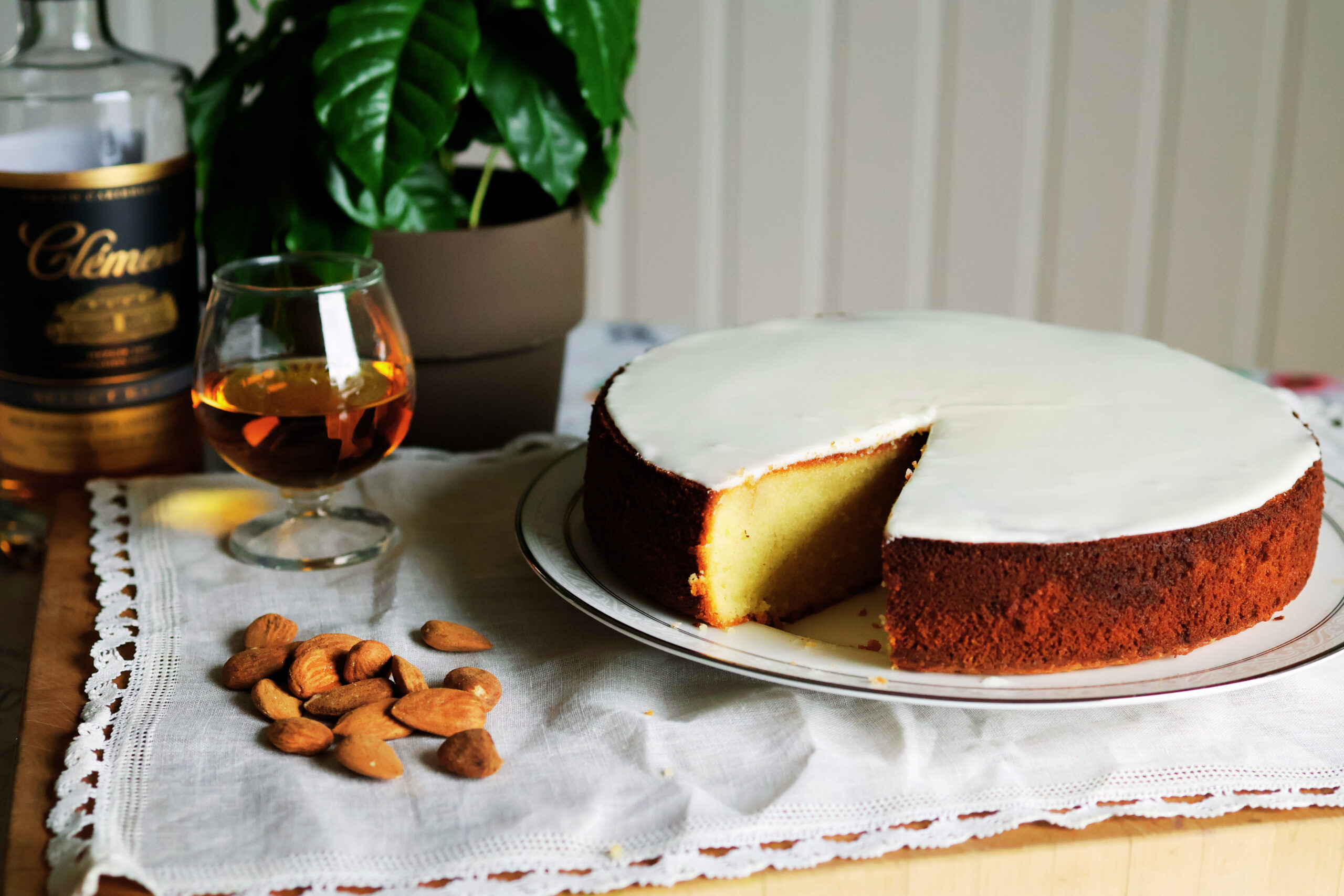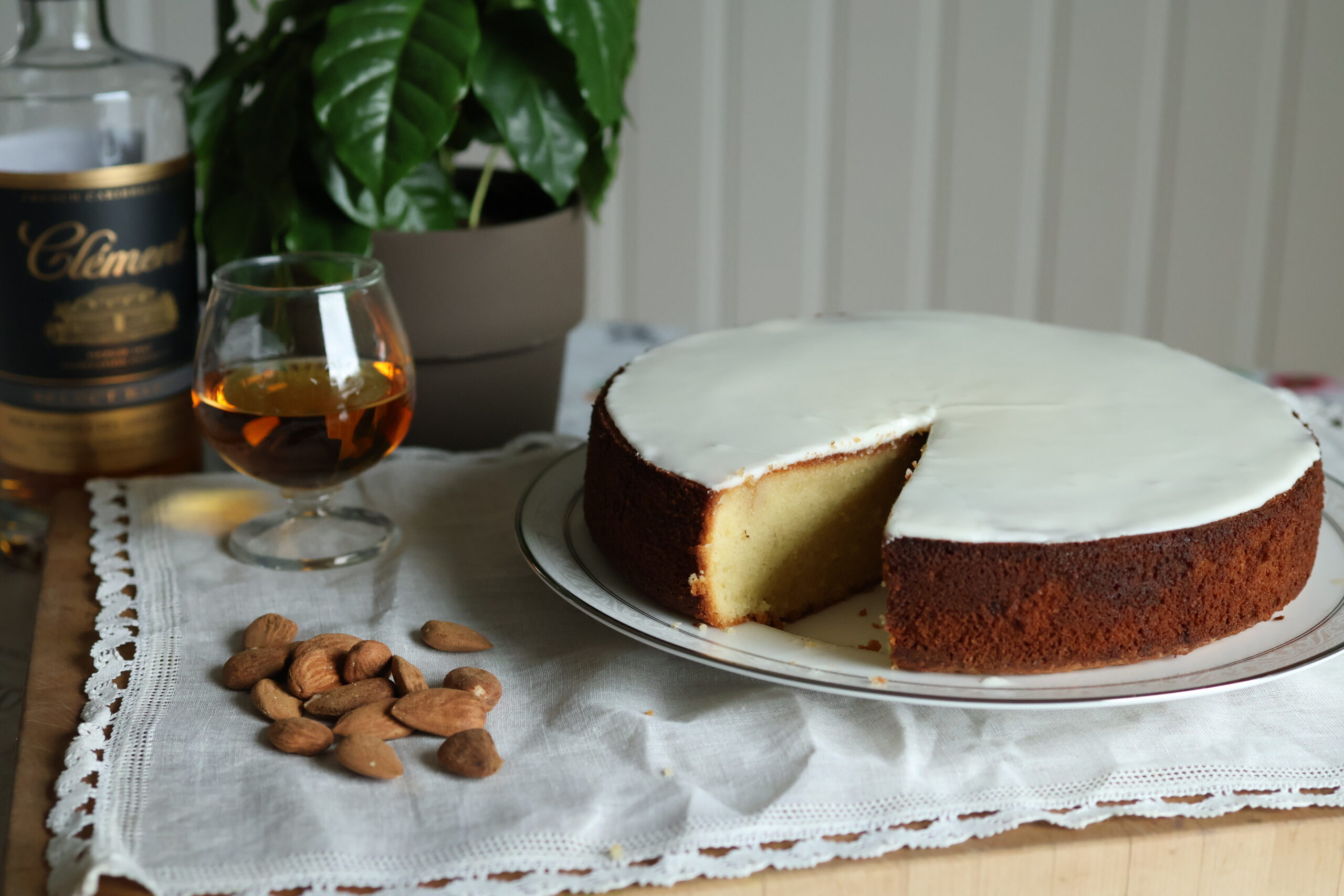
This French almond rum cake comes from the city of Nantes, which harbors a large historical port. In the 18th century, this port received many different imports from French Caribbean colonies such as rum, vanilla, and cane sugar. This French cake was created by the Nantes baker Rouleau in 1820 as a way to showcase ingredients from the colonies. The modern version of the cake was solidified by the L.U. biscuit (cookie) company in 1912. Today, the frosting on top of the cake is white, but older depictions show it as amber. It keeps quite well, and because of this, is also known as a traveler’s cake. Today, gâteau nantais is an emblem of Nantes gastronomy.
This is a dense cake but moist cake made with almond flour, eggs, sugar, rum, and a small amount of wheat flour. A sweet rum soaking syrup drenches the cake before it is glazed with a simple icing of powdered sugar and French rum.
Any dark rum will work for this recipe, but if you want to get really authentic, look for rhum agricole, which is French Caribbean rum. While other types of rum are made by distilling molasses, French rum is made by distilling raw sugarcane juice. This results in a grassier, more vegetal after-taste than molasses-distilled rum.

French Almond Rum Cake from Nantes / Gâteau Nantais
Ingredients
Method
- To a large bowl, add the sugar and butter and beat with an electric mixer until pale yellow and fluffy.
- Next, add in the almond flour and salt and beat until well incorporated.
- Crack 6 eggs into a bowl and lightly beat them, and then add them to the batter a little at a time, incorporating well after each addition.
- Now, add in the all-purpose flour and fold it in until there are no streaks left.
- Add the rum and beat just until fully combined.
- Pour the batter into a 9 inch (23 cm) round springform cake pan that is lined on the bottom with parchment paper. Smooth the top of the cake.
- Bake in a 180C / 350F pre-heated oven for 50-55 minutes, or until a toothpick comes out clean.
- While the cake is baking, put the sugar and water for the soaking syrup into a small saucepan over medium heat and bring to a boil. Stir to dissolve the sugar.
- Boil for about 5 minutes to reduce the liquid to about half of the original amount.
- Once the syrup has reduced, take it off the heat and stir in the rum for the soaking syrup, and then put it back on the heat for 2 minutes, careful not to ignite the rum. If it ignites, put the lid on the pot and it will put the flames out.
- Pour the hot syrup into a small bowl and set aside until ready to use.
- Once the cake has finished baking, remove it from the oven and place on a cooling rack for about 10 minutes. After 10 minutes, remove the cake from the springform pan and invert it onto your serving plate and remove the parchment paper.
- Leave the cake inverted on the plate, and poke holes all over the bottom of the cake with a toothpick to prepare it for the soaking syrup.
- Then, paint on the syrup with a pastry brush, pausing as needed to let it soak into the cake before adding more. It seems like a lot of liquid, but it really is the perfect amount for adding moisture to this cake.
- Let the cake cool completely before making the icing for the top.
- For the icing, whisk together the sifted powdered sugar with the smallest listed amount of rum. Whisk until it reaches a thick but pourable consistency. Add more rum as needed. You will want an icing that is thin enough to spread but thick enough to not pour down the sides of the cake.
- Let the icing set for about 1 hour before slicing into it. And if you can wait, this cake is even better the next day.

Can rum flavoring be used rather than rum? If so, how much would you use to equal the amount in the cake and in the icing? Thank you!
Hi Deborah!
The rum really adds not just flavor, but makes the cake moist. You could try making a simple syrup and then adding rum flavoring to that. However, I’ve never tried this myself.
Thank you!
is there a way to make this in a regular pan if you dont have springform available?
Yes, absolutely! Just make it as the recipe suggests, except with a regular cake pan. Make sure to put a ring of parchment on the bottom so that it pops right out.